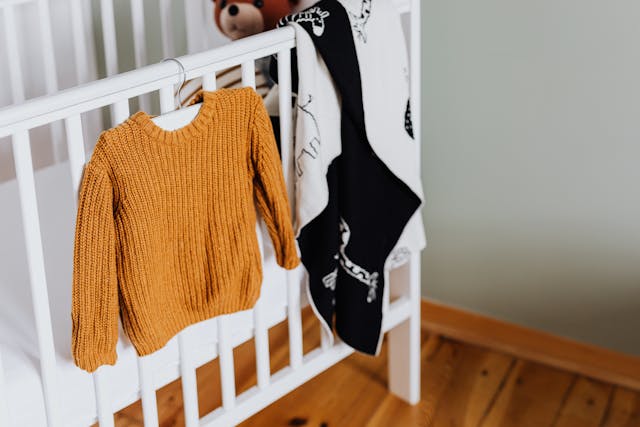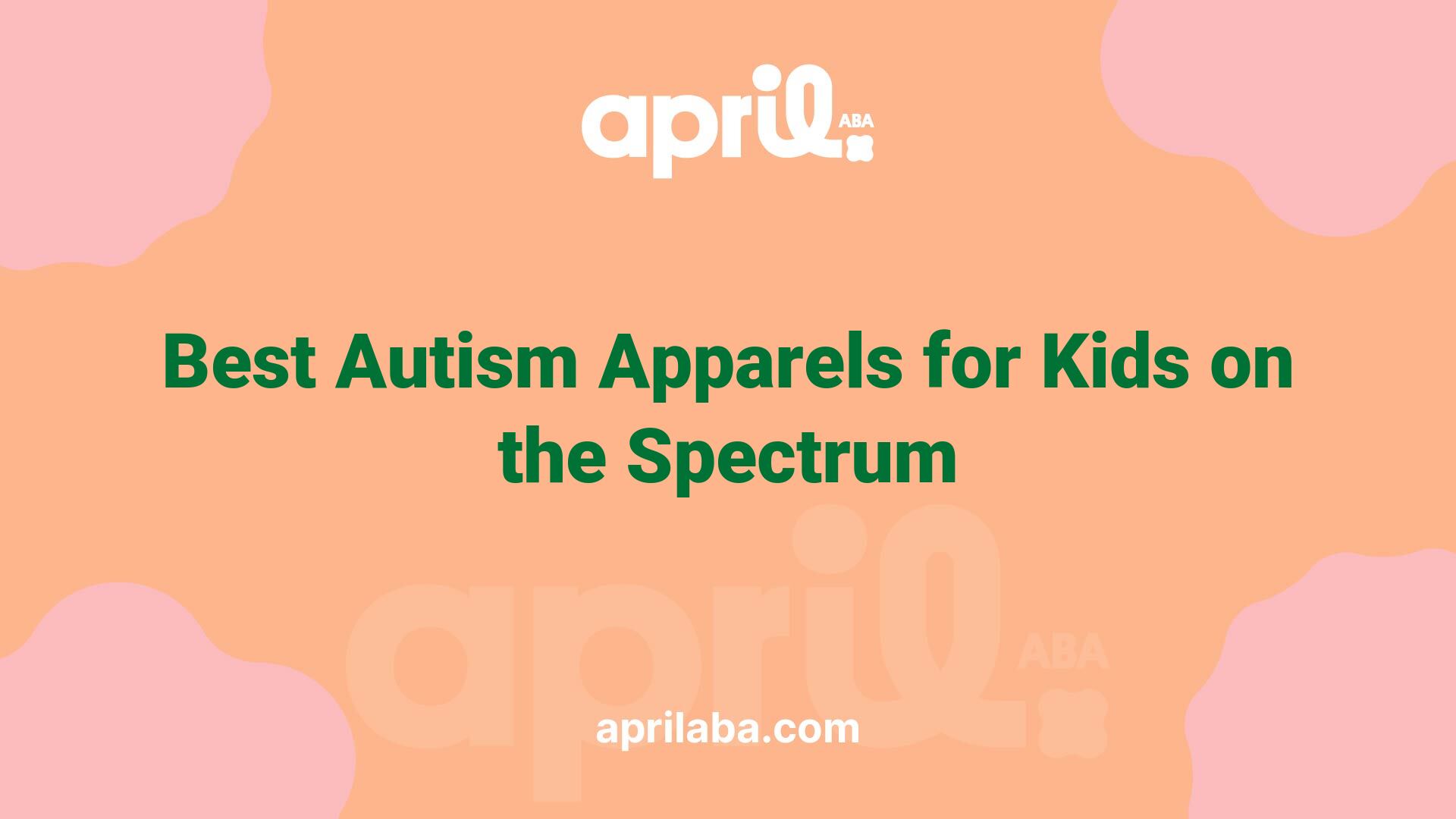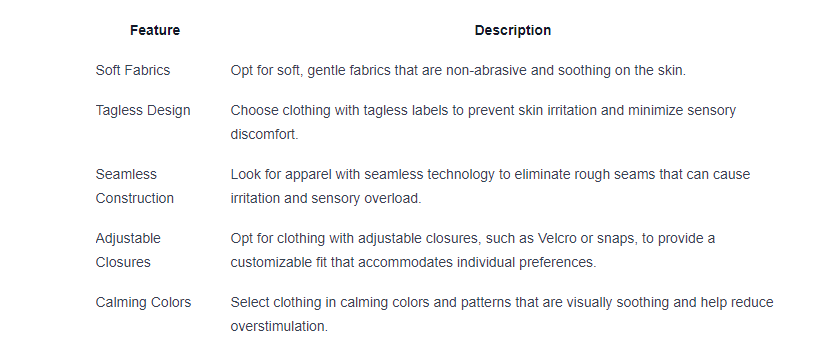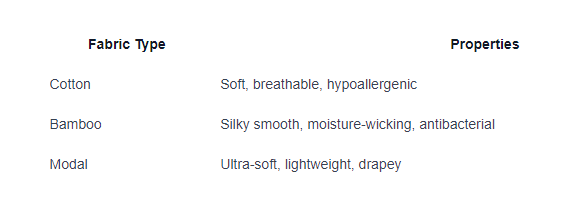Best Autism Apparels for Kids on the Spectrum
February 25, 2025
Discover the best autism apparels for sensory comfort! Dive into seamless designs and sensory-friendly fabrics for kids on the spectrum.


Understanding Autism Apparel
When it comes to selecting clothing for children on the autism spectrum, prioritizing comfort is of utmost importance. Kids on the spectrum often experience sensory sensitivities that can make wearing certain fabrics or styles challenging. Understanding the unique needs of these children is key in choosing the right apparel that supports their well-being and confidence.

Importance of Comfort for Kids on the Spectrum
The comfort of clothing plays a significant role in the daily lives of children on the autism spectrum. Sensory sensitivities can make the sensation of certain fabrics, tags, seams, and closures unbearable for these children. Uncomfortable clothing can lead to increased agitation, sensory overload, and challenges with focus and engagement. By providing apparel that prioritizes comfort, caregivers can help create a positive and supportive environment for children on the spectrum.
Features to Look for in Autism Apparels
When selecting apparel for kids on the spectrum, there are specific features to consider that can enhance comfort and overall well-being. These features include:

By focusing on these features when selecting autism apparel, caregivers can ensure that children on the spectrum are dressed in clothing that supports their comfort, promotes sensory regulation, and enhances overall well-being.
Sensory-Friendly Fabrics
When it comes to choosing autism clothing for kids on the spectrum, selecting sensory-friendly fabrics is paramount to ensure their comfort and well-being. These fabrics are designed to provide a gentle and pleasant tactile experience, minimizing sensory challenges that individuals with autism may face. In this section, we will explore two key aspects of sensory-friendly fabrics: soft and breathable materials, and tagless designs.
Soft and Breathable Materials
Sensory-friendly clothing for kids on the spectrum should be crafted from soft and breathable materials that are gentle on the skin and provide ultimate comfort. Fabrics such as cotton, bamboo, and modal are popular choices for their softness and skin-friendly properties. These materials offer a luxurious feel and allow for ample air circulation, preventing overheating and discomfort.
In the table below, we highlight some common sensory-friendly fabrics used in autism apparel:

Tagless Designs
Tagless designs are another essential feature to consider when selecting autism clothing for kids on the spectrum. Tags and labels on clothing can often cause irritation and discomfort, leading to sensory overload for individuals with autism. Opting for tagless apparel eliminates this potential source of discomfort, allowing children to focus on their daily activities without distractions.
Incorporating tagless designs in clothing not only minimizes sensory challenges but also promotes a seamless and irritation-free wearing experience. Tagless garments often feature printed or heat-transferred labels that provide essential information without the need for traditional tags.
By prioritizing soft and breathable materials along with tagless designs in autism apparel, caregivers and parents can help children on the spectrum feel comfortable, confident, and at ease in their clothing choices. These thoughtful considerations aim to enhance the overall sensory experience and promote a positive relationship with dressing and self-expression for individuals with autism.
Adaptive Clothing
When it comes to choosing the right clothing for children on the autism spectrum, adaptive apparel plays a crucial role in providing both comfort and functionality. Two key features to consider in adaptive clothing are easy on-easy off features and adjustable closures.
Easy On-Easy Off Features
Adaptive clothing designed with easy on-easy off features simplifies the dressing process for both the child and the caregiver. These features typically include wide openings, magnetic closures, or zipper alternatives that allow for quick and hassle-free dressing and undressing. By reducing the time and effort required for clothing changes, easy on-easy off features can help minimize sensory overload and improve overall comfort for children on the spectrum.
Adjustable Closures
Another important aspect of adaptive clothing is the presence of adjustable closures. These closures, such as Velcro straps, snap buttons, or sliding buckles, enable caregivers to customize the fit of the garment according to the child's specific needs and preferences. Adjustable closures not only accommodate fluctuations in body size but also allow for a personalized level of comfort, making it easier for children with sensory sensitivities to wear the clothing comfortably throughout the day.
By incorporating easy on-easy off features and adjustable closures into adaptive apparel, caregivers can help children on the autism spectrum navigate the challenges associated with dressing while promoting independence and self-confidence. The thoughtful design elements of adaptive clothing contribute to a more inclusive and accommodating wardrobe for children with unique sensory needs.
Seamless Options
When it comes to selecting apparel for children on the autism spectrum, opting for seamless options can significantly enhance comfort and reduce irritants that may trigger sensory sensitivities.
Eliminating Irritants
Seamless clothing is designed to eliminate common irritants that traditional seams may pose for children with sensory sensitivities. By removing seams along the shoulders, sides, and neckline, these garments reduce the risk of discomfort, itching, or agitation caused by friction against the skin.

Seamless Technology in Apparel
Seamless technology in apparel involves specialized manufacturing techniques that create garments without any visible seams. These seamless pieces are crafted to provide a smooth and uninterrupted surface against the skin, offering a gentle and friction-free wearing experience.
Benefits of Seamless Technology
Eliminates potential irritants
Enhances comfort for sensory-sensitive individuals
Provides a smooth and seamless fit
By choosing apparel with seamless design features, caregivers can help create a sensory-friendly wardrobe that promotes comfort, reduces sensory overload, and supports the well-being of children on the autism spectrum.
Tagless Designs
When it comes to choosing autism-appropriate clothing for kids on the spectrum, tagless designs play a significant role in minimizing sensory overload and enhancing comfort. These tag-free garments are specifically designed to cater to the unique sensory sensitivities often experienced by individuals with autism.
Minimizing Sensory Overload
Tagless apparel helps reduce potential sources of sensory discomfort that tags can cause. For children on the spectrum, the feeling of an itchy or irritating tag against their skin can be overwhelming and distracting. By opting for tagless designs, parents and caregivers can help minimize sensory overload, allowing children to focus on other activities without unnecessary sensory distractions.
Benefits of Tagless Apparel
The benefits of tagless clothing extend beyond sensory comfort. Tagless designs promote a seamless and smooth experience for children, preventing itching or scratching that can result from traditional clothing tags. These garments offer a more streamlined and comfortable fit, enhancing the overall wearing experience for kids with autism.
Moreover, tagless designs can contribute to increased independence and confidence in children with autism. By eliminating potential triggers for sensory sensitivities, tagless apparel empowers children to dress themselves with greater ease and comfort.
By prioritizing tagless designs in autism-appropriate clothing, caregivers can provide children on the spectrum with comfortable and sensory-friendly garments that support their individual needs and promote emotional well-being.
Comfortable Seams
When it comes to selecting autism-friendly apparel for children on the spectrum, the comfort of the clothing plays a significant role in their overall well-being. In this section, we will explore the importance of comfortable seams, focusing on smooth seams for sensory sensitivity and reinforced seams for durability.
Smooth Seams for Sensory Sensitivity
For children with sensory sensitivities, the texture and feel of clothing can greatly impact their comfort level. Smooth seams are essential in autism apparel as they help minimize irritation and discomfort that can be caused by rough or bulky seams. Opting for clothing with seamless or flat seams can provide a gentle and non-intrusive feel against the skin, reducing the likelihood of sensory overload.
Smooth seams not only enhance the tactile comfort of the clothing but also contribute to a seamless wearing experience for children who may be hypersensitive to touch. By eliminating potential friction points along the seams, caregivers can ensure that the clothing feels soothing and non-restrictive, promoting a sense of ease and calmness for the child.
Reinforced Seams for Durability
In addition to focusing on sensory considerations, the durability of the clothing is equally important, especially for children who may engage in active or sensory-seeking behaviors. Reinforced seams play a crucial role in enhancing the longevity of autism apparel, ensuring that the garments can withstand frequent wear and washing without compromising their structural integrity.
By reinforcing seams in high-stress areas such as the shoulders, elbows, and knees, caregivers can prevent premature wear and tear, making the clothing more robust and long-lasting. This feature is particularly beneficial for children who may have a tendency to engage in repetitive movements or activities that put extra strain on the clothing.
When selecting autism-friendly apparel for kids on the spectrum, considering both smooth seams for sensory sensitivity and reinforced seams for durability can contribute to a positive and comfortable wearing experience. By prioritizing these features, caregivers can provide clothing that not only meets the unique sensory needs of the child but also stands the test of time, ensuring lasting comfort and functionality.
Sizing and Fit
When it comes to selecting autism clothing for children on the spectrum, ensuring proper sizing and fit is paramount for their comfort and well-being. Tailoring the apparel to suit their specific needs can make a significant difference in their daily life.
Tailoring for Comfort
Tailoring autism clothing for children involves more than just selecting the right size. It also entails considering the unique sensory sensitivities and comfort requirements of each individual. Garments should be designed with soft, non-irritating materials and seamless construction to prevent unnecessary discomfort for kids on the spectrum.
Proper tailoring also includes adjustable features that allow for a personalized fit. This flexibility enables caregivers to customize the clothing to meet the child's preferences and sensory needs, ensuring optimal comfort throughout the day.
Importance of Proper Fit
The importance of proper fit in autism apparels cannot be understated. Ill-fitting clothing can cause sensory discomfort, restrict movement, and lead to increased anxiety for children with autism. By prioritizing the proper fit of garments, caregivers can create a supportive and comfortable environment for kids on the spectrum.
To emphasize the significance of proper fit, caregivers should pay attention to key areas such as the waist, shoulders, and sleeves. Ensuring that the clothing is not too tight or too loose in these areas can prevent sensory overload and enhance the overall comfort level for the child.
When selecting autism clothing for kids on the spectrum, remember that proper sizing and fit are essential elements in promoting their comfort and well-being. By tailoring the apparel to meet their individual needs and preferences, caregivers can provide children with autism the support they require to navigate their daily activities with ease and confidence.

Color and Pattern Considerations
When choosing apparels for children on the autism spectrum, it's essential to consider the impact of colors and patterns on their sensory experience. By selecting clothing in calming colors and patterns while avoiding overstimulating designs, caregivers can help promote comfort and well-being for their children.
Calming Colors and Patterns
Calming colors and patterns play a crucial role in creating a soothing environment for children on the autism spectrum. These colors typically include soft, muted tones such as pastels and earthy hues. Shades of blue, green, and lavender are known to have a calming effect on individuals with sensory sensitivities, promoting relaxation and reducing stress.

In addition to colors, patterns can also influence the sensory experience of children with autism. Simple and repetitive patterns, such as stripes or dots, are generally well-received as they provide visual interest without causing sensory overload. These patterns can help maintain a sense of order and predictability in the child's environment, contributing to a more comfortable experience.

Avoiding Overstimulating Designs
While some children may find comfort in specific colors and patterns, it's crucial to avoid overstimulating designs that can overwhelm their senses. Bright and fluorescent colors, as well as complex and intricate patterns, have the potential to trigger sensory overload in individuals with autism.
By steering clear of these intense designs and opting for more muted and soothing options, caregivers can help create a calm and supportive environment for children with sensory sensitivities. Prioritizing comfort and minimizing sensory distractions through thoughtful color and pattern choices can contribute significantly to the overall well-being and positive sensory experience of kids on the autism spectrum.
Sources
https://www.yellowbusaba.com/post/clothes-for-children-with-autism
https://www.autismparentingmagazine.com/best-autism-apparels/
Join Our
Community
At April ABA, we're committed to providing you with the most up-to-date, relevant, and helpful resources to support your family's autism journey. Be sure to check back often, as we continuously add new content to keep you informed and empowered.
.webp)

.svg)
.svg)
.svg)
.svg)




.svg)

.svg)